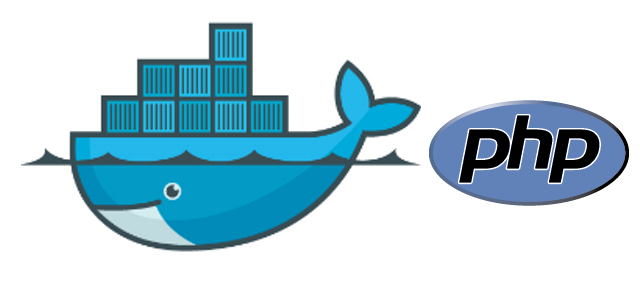Perguntas Frequentes sobre novos cassinos online
Entre as promoções, destacamos o giro diário na Superspin, onde você pode ganhar giros grátis e outros benefícios. O portfólio de jogos é super bem organizado e você pode testar mais de 5 mil títulos no modo demonstração. Símbolo de glamour e de sorte, ela é encontrada em diferentes versões, como Americana, Francesa, Europeia e até brasileira. Ou seja, digamos que você gostou da oferta da Parimatch e criou uma conta. Isso não é possível, já que vai contra as regras de cassinos na internet. Existem diversos cassinos online que não contam com licença de operação e nem certificados de segurança em sua plataforma.
Além do caça-níquel, há torneios diários válidos para as mesas de blackjack e Mega Roleta. Ou seja, você poderá se dar bem de diversas maneiras enquanto se diverte com o vasto catálogo de jogos. Várias plataformas oferecem bônus de boas-vindas com saldo extra para novos usuários.
E a autoridade regulamentadora de Gibraltar ajuda na fiscalização de nossos dados, garantindo que eles sejam auditados constantemente na busca de um ambiente confiável para você jogar. Além disso, também verifique detalhes como depósito mínimo e depósito máximo por método, além dos tempos de processamento. Um bom exemplo disso é a Betano, que tem um aplicativo realmente interessante. Então, basta acessar o site mobile da Betano para fazer o download e instalação do aplicativo para aparelhos de sistema Android. Todos esses pontos acima são apenas alguns dos tópicos que avaliamos. Certamente, há diversos outros pontos que sequer precisamos mencionar, já que esses são os mais importantes.
Blackjack
Há diversos jogos de casino online que oferecem boas probabilidades ao jogador brasileiro. As roletas, por exemplo, costumam ter apostas com chances relativamente altas de acerto, desde que você escolha uma versão favorável, como a Roleta Europeia (na comparação com a Americana). Entre os slots, as máquinas com maior índice de RTP (retorno ao jogador) são as mais indicadas para tentar ganhar de verdade. Mais uma especialista em salas ao vivo no universo de casino com dinheiro real . A Playtech criou game shows muito divertidos (como Mega Fire Blaze Lucky Ball e Spin a Wild) e tem versões em português para seus principais sucessos.
Plataforma de jogos cassino é legal no Brasil?
O Cassino Playpix também conta com os jogos mais populares do momento, como Aviator, Sapaceman, JetX, Bank Run, e outros. Além disso, se você não resiste aos jogos de mesa, vai encontrar bacará, blackjack e roleta, com mesas em português. Também possuímos um dos melhores sistemas de saques entre cassinos do Brasil, propiciando a nossos jogadores uma experiência completa, garantindo que seus ganhos estejam rapidamente em sua conta. Sim, os jogos de cassino online da KTO usam geradores de números aleatórios (RNG) para garantir a aleatoriedade e a imparcialidade dos resultados.
Principais inovações em Gestão Empresarial em 2025 e a transformação do trabalho dos gestores
Em relação aos jogos, a plataforma é completa, com títulos de mais de 100 provedores de jogos online e ao vivo. Enquanto Playtech, Evolution e outras grandes empresas do ramo se especializam em cassino ao vivo, a PGSoft segue sendo uma das campeãs nos títulos com jogabilidade RNG. Ela criou uma série de hits como Fortune Tiger, Fortune Rabbit e Fortune Dragon, alguns dos mais populares entre os jogadores brasileiros no momento. Os slots temáticos da PGSoft estão nos menus dos cassinos mais bacanas, como o 1xBet, por exemplo.
- Porém, opções como Gates of Olympus, Sweet Bonanza, Roleta Brasileira e Aviator são muito populares entre os brasileiros.
- Você aposta em cores, grupos de números ou tipos de números (pares ou ímpares), por exemplo.
- O ideal é você jogar jogos de provedores confiáveis pelo simples fato de eles terem jogos que são confiáveis e que são testados por empresas que confirmam que o jogo é confiável de verdade.
- Um certo destaque para a bet365 e a Betano, que oferecem uma grande quantidade de métodos.
- O cassino da bet365 entrou em nossa lista dos melhores cassinos no Brasil por ter um site com diversos jogos originais.
O pôquer nem sempre está entre os melhores bônus de cassino para jogar, mas é comum que apareçam ofertas voltadas apenas para esse jogo de cartas. Afinal, os jogadores do Brasil devem escolher os games que mais se encaixam no que procuram. Esses jogos se destacam pela sua praticidade, já que os apostadores escolhem sua entrada e apenas apertam um botão para jogar. Em nosso conteúdo, fazemos marketing e o uso de links de afiliação de apostas esportivas online. Isso significa que, ao clicar, você poderá ser redirecionado a um de nossos anunciantes. Antes de adquirir qualquer produto ou serviço, certifique-se de que se trata de site licenciado em sua jurisdição e de atender todas as exigências legais aplicáveis ao jogo responsável.
Ou seja, ao selecionar os melhores cassinos online no Brasil, levamos a segurança muito a sério. Dessa maneira, só indicamos sites de cassino online no Brasil com total confiança. Dessa forma, olhamos para a variedade de caça-níqueis, jogos de mesa e jogos de carta. Se houver um cassino ao vivo com jogos online em tempo real, como blackjack ao vivo e poker online, melhor ainda. Como dissemos anteriormente, escolher os melhores cassinos é desafiador.
A variedade de jogos nos melhores sites costuma ser grande e a lista inclui jogos de mesa, jogos de cartas e mais. E tudo com uma segurança grande e os melhores métodos de pagamento para depósito. Então, vale a pena conferir as opções de casino online com essa possibilidade. Inclusive, na maioria das vezes, dá para jogar em dispositivos móveis. Por isso, encontrar o jogo de cassino online que mais lhe agrada exige tempo. Dessa maneira, o ideal é testar as plataformas dos melhores cassinos online e ver todas as opções disponíveis no catálogo.
O crupiê é a pessoa encarregada de conduzir um jogo, seja distribuindo cartas, girando roletas, lançando bolas ou fazendo o que for necessário para que o jogo seja realizado. Lembre-se também, ao solicitar seus ganhos, de cumprir todos os requisitos necessários para que o processo ocorra da melhor maneira possível. Dessa forma, você pode se preparar da melhor maneira para começar a ganhar grandes quantias.
Barbi, assistente de Compras na OXITENO, o grande diferencial da Della Volpe é a quantidade de armazéns espalhados em todo Brasil. Outro diferencial, segundo ela, é o portal, onde os fornecedores podem programar as coletas. “E o último e mais importante, a facilidade que se tem em falar com as pessoas que nos atendem”, completa. Este curso prepara os licenciados para se tornarem pesquisadores e gestores dos processos de Educação Inclusiva, tanto em ambientes escolares quanto em contextos não escolares. Por último, o Mines também tem o seu lugar nesse ranking de destaque. O Correio Braziliense garante que o seu time fez um excelente trabalho para trazer informações confiáveis para o leitor.
Código Bônus F12 Bet: use F12MAXPROMO para apostar
Como todos os agentes são brasileiros e preparados, a comunicação é bastante clara e assertiva. Um dos focos da casa, inclusive, são as promoções, e destacamos o sorteio diário de 20 prêmios de R$100 aos jogadores dos slots Kick Ass Gaming. Baixar um aplicativo de cassino é grátis e você passa a ter algumas vantagens em relação ao site mobile. Uma delas é a possibilidade de jogar em tela cheia – o que é bem bacana para quem tem um smartphone com tela de alta resolução e cores bem vivas, como os da Apple. A outra vantagem é ter um atalho já na tela inicial, permitindo acesso rápido à sua conta no cassino.


